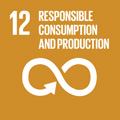- Docente: Marco Bortolini
- Credits: 6
- SSD: ING-IND/17
- Language: Italian
- Teaching Mode: Traditional lectures
- Campus: Bologna
-
Corso:
Second cycle degree programme (LM) in
Mechanical Engineering (cod. 5724)
Also valid for Second cycle degree programme (LM) in Mechanical Engineering (cod. 5724)
Learning outcomes
Students know general criteria and quantitative methods for planning, design and management of logistic systems of modern flexible factory (manufacturing, assembling, transport and storage) and supply chain.
Course contents
INFORMATION FLOW IN INTEGRATED LOGISTICS
PRODUCTION PROGRAMMING PROCESS
Production information flow management: the complete production planning, execution and control process. Aggregated planning: objectives, time horizon, actors and level of detail. The formation of the main production plan (Master Production Schedule)
THE MANAGEMENT OF MATERIALS REQUIREMENTS
Materials requirements management: demand systems and stock systems Required systems: Material Requirement Planning (MRP): advantages, application limits, necessary inputs, software supports and closed loop systems Required systems: Just in Time (JiT): advantages, application limits. Requirements for the application. KanBan as JiT operative tools: information content and templates for optimal number design. The SMED technique for optimizing setup time. Stock systems: fixed order quantity models (Economic Order Qauntity - EOQ-ROP) and fixed re-ordering time. The definition of the reorganization level (ROP). Sizing the Safety Stock (SS).
SCHEDULING
Production scheduling: objectives and definitions. The different types of production systems. The parameters for the evaluation of the scheduling performances. Load rules (EDD, SPT, LPT, MST, etc.). Models and algorithms for scheduling single machines, parallel machines (identical and generic), flow shop systems (with 2 machines and n machines) and job shop systems.
ADVANCED TOOLS FOR THE STUDY AND THE DESIGN OF LOGISTIC SYSTEMS
Queue theory: general information about the method, working hypothesis and characterization of a queue system. Construction of the model of arrivals and the model of services. Stationary stationary condition.
Average queue data: average number of customers in the service and in the queue, average waiting time in the service and in the queue, probability of presence in the service. Industrial applications of the theory of queues.
Readings/Bibliography
Recommended book (in Italian):
A. Pareschi, E. Ferrari, A. Persona, A. Regattieri. (2011). Logistica Integrata e Flessibile per i sistemi produttivi dell’industria e del terziario con applicazioni numeriche e progettuali (2° edizione). Società Editrice Esculapio, Bologna. ISBN: 978-88-7488-464-3.
Additional readings by the lecturers
Other books for individual additional study (in Italian):
A. Pareschi. (2007). Impianti Industriali - Criteri di Scelta, Progettazione e Realizzazione (2° edizione). Società Editrice Esculapio, Bologna. ISBN: 978-88-7488-234-2.
R.F. Jacobs, R.B. Chase, A. Grando, A. Sianesi. (2020). Operations Management nella Produzione e nei Servizi (4° edizione). Mc Graw-Hill, Milano. ISBN: 978-88-386-9563-6.
A. Brandolese, A. Pozzetti, A. Sianesi. (1991). Gestione della Produzione Industriale – Principi, Metodologie, Applicazioni e Misure di Prestazione. Hoepli, Milano. ISBN: 88-203-1902-0.
D.J. Bowersox, D.J. Closs, O.K. Helferich. (1989). Logistica – Strategia e Integrazione in Azienda. Tecniche Nuove, Milano. ISBN: 88-7081-346-0.
A.F. de Toni, R. Panizzolo. (2018). Sistemi di Gestione della Produzione. Isedi, De Agostini Scuola, Novara. ISBN: 978-88-8008-382-5.
A. Payaro. (2022). Logistica Pratica – Concetti Essenziali per la Comprensione e la Gestione della Logistica e della Supply Chain. Società Editrice Esculapio, Bologna. ISBN: 978-88-9385-293-7.
F. Mocellin (2011). La Gestione delle Scorte e del Magazzino – Metodi Logistici per il Lean Manufacturing. Franco Angeli, Milano. ISBN: 978-88-917-4476-0.
J. Bicheno, A.P. Staudacher. (2009). Metodologie e Tecniche per la Lean. Pitagora Editrice, Bologna. ISBN: 88-371-1744-4.
A. Brun, M. Casadio Strozzi. (2020). Manuale Six Sigma per le Green Belt. Società Editrice Esculapio, Bologna. ISBN: 978-88-9385-220-3.
A. Brun, M. Casadio Strozzi. (2020). Manuale Six Sigma per le Black Belt. Società Editrice Esculapio, Bologna. ISBN: 978-88-9385-240-1.
Teaching methods
The class includes teaching lessons, practical applications, case studies and numerical applications.
Assessment methods
The assessment is made of a final exam to check knowledge and abilities. The final exam includes a written paper followed by an oral session.
In the written paper, students are asked to solve numerical applications given their knowledge of the theoretical background. The oral session completes the written paper allowing students to discuss on theory and acquired abilities.
Teaching tools
The reference web platform for the teaching material is VIRTUALE updated step-by-step during the class lessons.
Office hours
See the website of Marco Bortolini
SDGs



This teaching activity contributes to the achievement of the Sustainable Development Goals of the UN 2030 Agenda.
